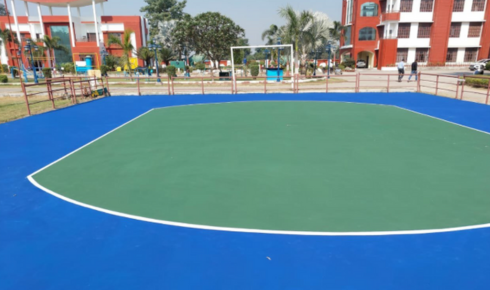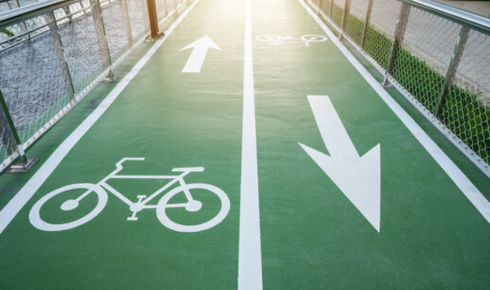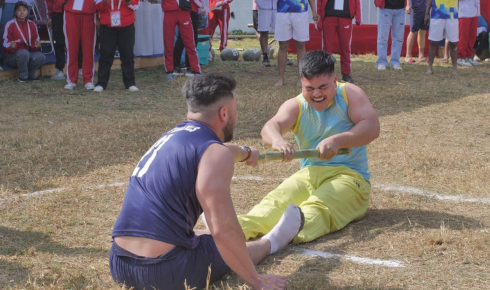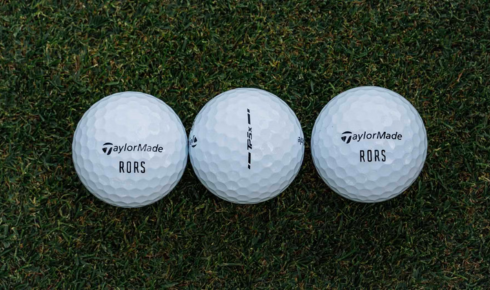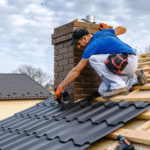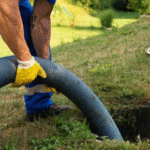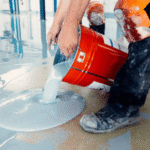In recent years, skating has seen a significant rise in popularity across India. From community skate parks and school skating zones to public recreational facilities, the demand for dedicated skating areas is growing. However, a successful skating rink isn’t just about space—it’s about the surface. A smooth, safe, and durable skating rink flooring system forms the foundation of a great skating experience.
Whether you’re building a roller skating rink, an inline skating zone, or a multi-use court that includes skating, the skating rink surface plays a critical role in ensuring comfort, control, safety, and longevity. In this guide, we’ll explore the key steps to building the perfect skating rink, why synthetic surfaces like acrylic are leading the industry, and what makes a rink truly safe and enjoyable for all users.
Why the Surface Matters in Skating Rink Construction
Skating involves balance, speed, and continuous motion. A poorly constructed or uneven surface can lead to serious injuries, affect performance, or make the rink unfit for consistent use. A good skating rink surface must deliver:
- A smooth and even finish
- Slip resistance to avoid falls
- Appropriate hardness for control and speed
- Resistance to wear from skate wheels and weather
- Easy maintenance over time
Traditional surfaces like plain cement or pavers often fall short—they may crack, become slippery, or break down due to weather or frequent usage. That’s why many developers and facility owners are turning to synthetic skating surfaces, particularly acrylic-based systems.
Planning the Right Base for a Skating Court
Before the top surface is applied, the sub-base must be solid, level, and ready to support the entire system. This is the first and most critical step in skating rink construction.
- Base material: Use concrete or well-prepared asphalt for a strong foundation.
- Drainage: Ensure the base has proper slope and water runoff, especially for outdoor rinks.
- Compaction: The base should be firm and smooth, with minimal undulations.
- Curing: Let the concrete base cure fully before applying any top layers to avoid peeling or bubbling.
A good base ensures that the skating rink flooring stays intact over time and doesn’t develop cracks or dips that can compromise safety.
Acrylic Skating Rink Flooring: The Superior Solution
When it comes to synthetic surface systems, acrylic flooring is a game-changer. Originally developed for sports like tennis and basketball, acrylic systems have proven equally effective for skating zones, thanks to their performance characteristics.
Key Benefits of Acrylic Skating Surfaces:
- Smoothness: Acrylic creates a seamless, even finish that supports fast and controlled skating.
- Slip Resistance: Textured coatings offer optimal grip without making the surface rough.
- Durability: The system resists wear from skate wheels and remains intact under extreme weather conditions.
- Customization: Colors, logos, track lines, or branding elements can be added to match the theme or facility identity.
- Weather Resistance: UV-stable coatings ensure the surface doesn’t fade or become brittle under direct sunlight.
For outdoor skating rink installations, acrylic is particularly effective as it dries quickly after rain and doesn’t absorb moisture, preventing long-term damage.
Steps to Build an Acrylic Skating Rink Surface
Constructing a high-quality acrylic skating rink flooring system involves several steps:
1. Surface Preparation
The concrete or asphalt base is cleaned, dried, and repaired to eliminate cracks or bumps. This ensures that the following layers adhere properly and deliver a uniform finish.
2. Application of Primer
A specially formulated acrylic primer is applied to promote strong bonding between the base and the upper layers. This step is essential for longevity and prevents peeling.
3. Acrylic Resurfacer
A resurfacer coat fills in small imperfections and provides a level canvas for color and texture coats. It improves surface consistency and makes the rink safer and smoother.
4. Color Coats
At least two coats of acrylic paint—engineered for sports use—are applied. These coats are UV-resistant and available in custom colors. The top layer includes anti-slip textures, essential for skating safety.
5. Line Marking or Branding
If the rink is shared with other sports or has designated zones, markings can be applied using durable line marking paint.
These layers together form a robust, weather-proof, and low-maintenance skating court flooring system.
Outdoor Skating Rink Surface vs Indoor Setups
While indoor skating zones benefit from controlled environments, outdoor skating rink surfaces must withstand harsher elements—heat, rain, dust, and occasional heavy usage.
That’s where acrylic shows its strength. It does not warp under the sun, fade from UV exposure, or get slippery in monsoon conditions. Compared to wooden or rubber alternatives used in indoor setups, acrylic is more cost-effective and easier to maintain outdoors.
Indoor rinks may still opt for PU-based flooring systems, but they require climate control and may not be suitable for all facilities. For most public and private outdoor projects in India, acrylic remains the most reliable and affordable option.
Safety and User Experience
Safety is the top priority in any skating rink construction project. A fall at high speed can cause serious injuries if the surface is too slippery or uneven. Acrylic systems are designed with this in mind:
- The non-slip texture prevents sudden slips
- Cushion layers can be added for impact absorption
- Bright color finishes improve visibility and spatial awareness
- Seamless coatings reduce the risk of tripping
Together, these features enhance user confidence—making the rink suitable for skaters of all ages and skill levels.
Maintenance and Lifespan
One of the biggest advantages of synthetic skating surfaces like acrylic is low maintenance. Routine sweeping and occasional washing are enough to keep the surface in top condition. It resists cracks, mold, fading, and heavy abrasion.
With proper care, an acrylic skating rink can last 5–8 years before needing a recoat, making it a smart investment for city planners, school administrators, and recreational facility owners.
Applications Across India
More and more institutions across India are adopting acrylic skating rink flooring for projects like:
- School and college skating courts
- Community parks with multipurpose zones
- Rooftop rinks in urban residential buildings
- Public skating arenas in smart city projects
- Private clubs and recreational centers
Its visual appeal, reliability, and safety have made it a preferred choice from metros to tier-2 towns.
Conclusion
A good skating rink is built on more than just concrete and paint. It’s built with the intention of providing smooth rides, safe play, and a durable surface that can handle everything from a beginner’s first roll to a seasoned skater’s high-speed moves.
With its seamless finish, weather resistance, and customizable design, acrylic skating rink flooring is the perfect solution for today’s skating infrastructure demands. Whether you’re building for recreation, training, or professional use, make sure your rink delivers the performance and safety skaters expect.
For certified skating court flooring materials and expert advice, choose synthetic solutions designed for Indian conditions—and trusted by sports professionals nationwide.

